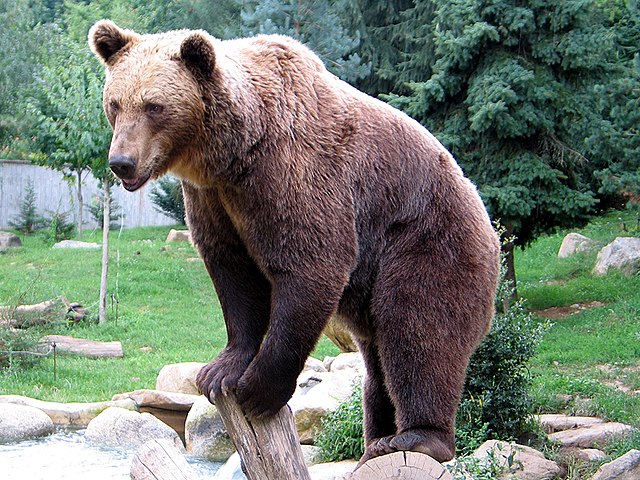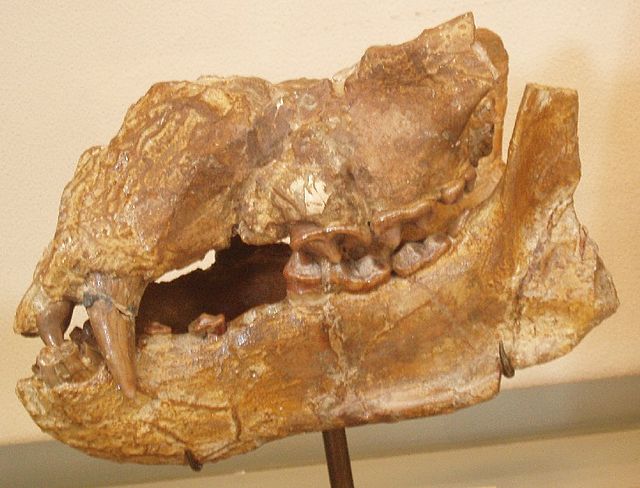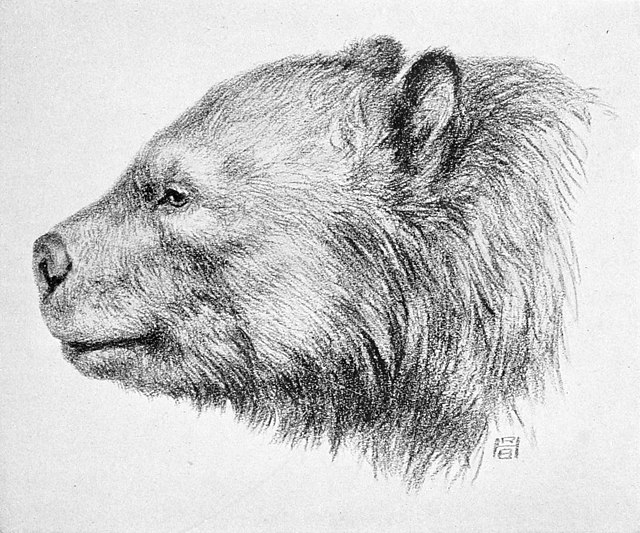The brown bear is a large bear species found across Eurasia and North America. It is one of the largest living terrestrial members of the order Carnivora, rivaled in size only by its closest relative, the polar bear, which is much less variable in size and slightly bigger on average. Adults of different subspecies range in weight from 80 to 600 kg, with males being heavier than females. Despite its name, brown bears aren't entirely brown; the pelage can be reddish to yellowish-brown, and dark brown to cream in color. During winter, brown bears in some populations hibernate and emerge during spring to regain up to 180 kg (400 lb) of weight. They have well developed dentition and claws, ideal for their lifestyle.
Brown bear
Adult female Eurasian brown bear, the nominate subspecies
Possible grizzly-black bear hybrid in the Yukon Territory, Canada
Brown bears are highly variable in size. Eurasian brown bears often fall around the middle to low sizes for the species.
Bears are carnivoran mammals of the family Ursidae. They are classified as caniforms, or doglike carnivorans. Although only eight species of bears are extant, they are widespread, appearing in a wide variety of habitats throughout most of the Northern Hemisphere and partially in the Southern Hemisphere. Bears are found on the continents of North America, South America, and Eurasia. Common characteristics of modern bears include large bodies with stocky legs, long snouts, small rounded ears, shaggy hair, plantigrade paws with five nonretractile claws, and short tails.
Bear
Plithocyon armagnacensis skull, a member of the extinct subfamily Hemicyoninae from the Miocene
Life restoration of Arctotherium bonariense
Fossil of the cave bear (Ursus spelaeus), a relative of the brown bear and polar bear from the Pleistocene epoch in Europe








